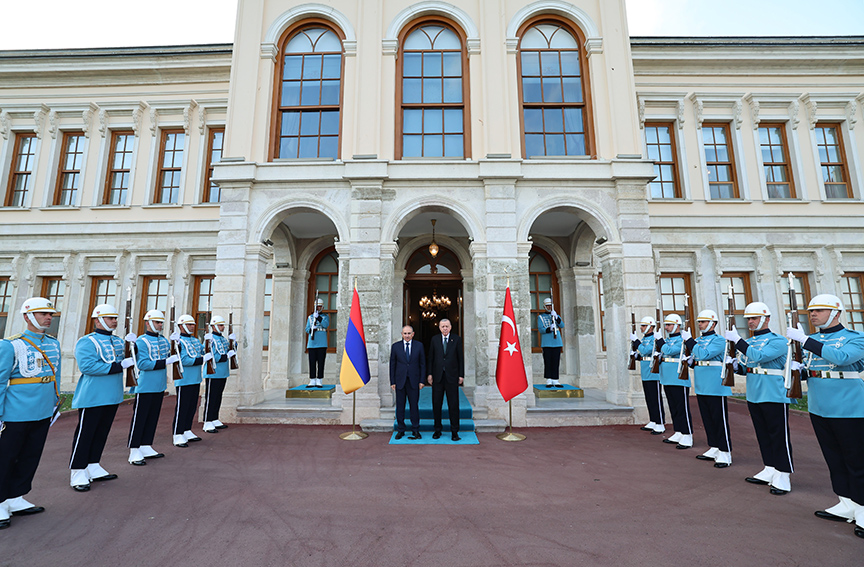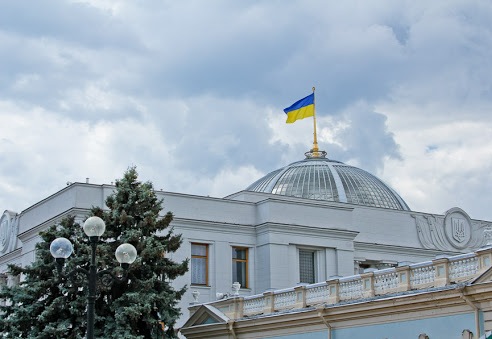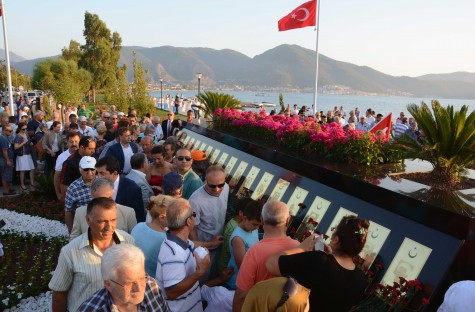Eleven countries forming the “Commonwealth of Independent States” (CIS) have come together on December 5th in a summit in Ashkhabad, the capital of Turkmenistan. In the summit where the Presidents of Russia, Kazakhstan, Uzbekistan, Turkmenistan, Tajikistan, Armenia, Ukraine, Belarus and Moldova have attended, Azerbaijan has been represented by its Prime Minister, while Kirgizstan has been represented by its Foreign Minister. No substantial announcement has been received from the summit which was expected to be a turning point in the endorsement of the “Eurasian Union” where Russia is in the lead. The Russian President is reported to have proposed at the meeting a customs union and a common economic zone in the first stage and to have expressed that he would welcome all countries who display willingness in this direction or are ready to attend this new organization. The public result of talks on this agenda item, released with the title “Ashgabat Declaration of the CIS Heads of State on the Further Development of Comprehensive Cooperation” adopted at the end of the summit has thus fallen behind expectations. In terms of data that makes the Eurasian Union interesting in the economic area, the total volume of trade of the eleven countries attending the summit was 281 billion dollars in 2011. This amount has shown a 36% increase compared to 2010. In the first six months of 2012, this amount has reached 135.9 billion dollars. A significant part of these amounts are comprised of gas, petroleum and other natural resources. There are also differences between the eleven countries politically. Georgia has withdrawn from membership and started looking towards establishing relations with the West. Armenia and Moldova also appear to share a similar spirit. The Georgian President and the Prime Minister of Moldova recently meeting in a summit in Yerevan, where the President of the EU Commission was also present, have transmitted a clear message in this direction. In terms of Russia’s strong ties, it is possible to say that it has focused on Armenia. In fact, during the Ashkhabad summit, Chairman of the Board of the Eurasian Economic Commission was in Armenia, meeting with the Prime Minister. He then met with the President upon his return on December 6th. While Armenian officials indicate that existing ties of strategic cooperation with Russia is evidence that they will not oppose Russian proposals, it is followed in the same breath that improving relations with the West and the EU does not form a contradiction and that in fact, preparations to sign a partnership treaty with the EU have been completed. Furthermore, it is also emphasized that preparations for a deep and comprehensive treaty of a free trade zone with the EU are in the offing. Armenian sources increasingly express their complaints on Russian pressures to join the Eurasian Union and indicate that enforced beauty cannot be. In this vein, the press does not refrain from making speculations on Turkey as well and assert that the Russian President has also invited Turkey to join the Eurasian union during his visit to Turkey and that this way Armenia, which argues that it has no common borders for a customs union, will lose its leverage and opening of the borders with Turkey will once again come to the agenda. Last of all, it could be seen that the proposal for a Eurasian Union has started being perceived as a serious development in the West. In a statement published in the press, the US Secretary of State who was in Ireland for the meeting of OSCE foreign Ministers, has issued a warning against the attempts of oppressive governments to re-Sovietize much of Central Asia and Eastern Europe and has felt it necessary to forebode that “it will be called Eurasian Union and all of that but let’s make no mistake about it”.
© 2009-2025 Center for Eurasian Studies (AVİM) All Rights Reserved
 PASHINYAN'S WORKING VISIT: A STEP FORWARD IN THE TÜRKİYE-ARMENIA NORMALIZATION PROCESS
PASHINYAN'S WORKING VISIT: A STEP FORWARD IN THE TÜRKİYE-ARMENIA NORMALIZATION PROCESS
 THE ‘ARMENIAN QUESTION’ IN UKRAINE - IV: THE PRUDENCE OF OFFICIAL KYIV
THE ‘ARMENIAN QUESTION’ IN UKRAINE - IV: THE PRUDENCE OF OFFICIAL KYIV
 MONUMENT ERECTED IN FETHIYE FOR TURKISH DIPLOMATS ASSASSINATED BY ARMENIAN TERRORISM
MONUMENT ERECTED IN FETHIYE FOR TURKISH DIPLOMATS ASSASSINATED BY ARMENIAN TERRORISM




























